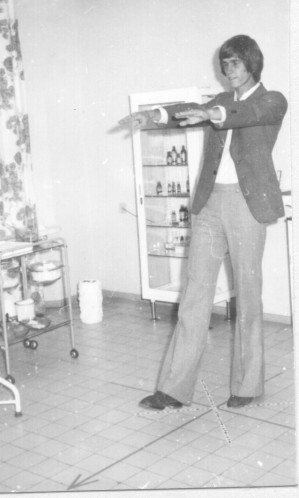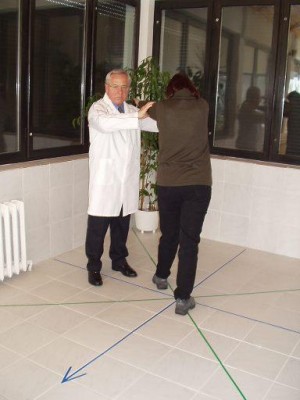Description of the performance technique of my own dynamic test.
In the proposed test of pendular marking time test, the subject is in standing position (straight trunk, the head bent down to the chest), with his/her eyes closed, with the lower limbs straight in the knees, he/she performs local pendular movements forward and back with the lower limb moved forward - fig. 1.

Fig. 1.
After finishing the first part of the test, the subject performs the same pendular movements with the second lower limb moved forward. The distance of the step forward in the test should be about 50 cm. The lower limbs should be raised to the height of about 10cm from the floor. This test is performed with the upper limbs raised forward horizontally. The duration of every part of the test should be about one minute. Pathological phenomena occurring in this test consist in rotating one's long axis of the body. In the event of the performed rotation the subject is not permitted to open his/her eyes until he/she is put in the initial position - fig. 2.

Fig. 2
Setting the patient with his/her eyes closed for the initial position
It is vital that the subject should not know which rotation he/she made during the test and that, while performing the next part of the test with the second lower limb moved forward, he/she should not correct subconsciously his/her reflexes. The subject bends his/her head down by 30° to the chest so that lateral semi-circular canals will be in the horizontal position i.e. in the plane of movement.